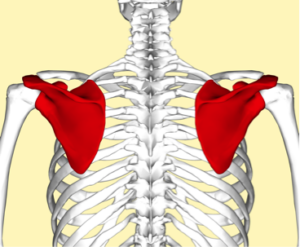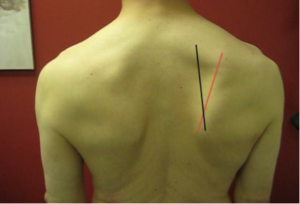Written on December 14, 2015 , by Eric Cressey
Today's guest post comes from Cressey Sports Performance - Massachusetts pitching coordinator, Matt Blake (@Blake_Matt). Matt is an integral part of the Elite Baseball Mentorships team. Enjoy! -EC
At a recent conference, Eric Cressey gave a presentation that tackled the importance of baseball professionals understanding scapular mechanics and the integral role they play in the throwing athlete’s kinetic chain. Eric Schoenberg also recently showed a great drill to incorporate scapular motion into the kinetic chain of activity. Given that I’m the third member of the Elite Baseball Mentorships team with these two, I figured I might as well chime in to highlight its importance from my perspective as well.
This is an important discussion to have because it can help demonstrate the need for all phases of development to work together to keep the high-level thrower operating on all cylinders. If we’re all speaking the same language, we can work to build the athlete’s awareness for their overall movement and integrate the education from the warm-up through the initial phases of the throwing progression.
If we’re all saying different things to the athlete using our own jargon, it’s easy for them to misinterpret the carryover of certain drills, exercises, and concepts across channels. If we all lay down similar verbiage in our conversations with the athlete regarding their prehab work, dynamic warm-up, strength training and throwing motion, it makes it a lot easier for them to appreciate the importance each piece holds in the puzzle.
In order to get started, let’s look at where the scapula is positioned and introduce its fundamental movements so we can begin to appreciate its role in the kinetic chain.
When looking at the scapula’s position and actions, you have to acknowledge the importance of its relationships with the rib cage and the humerus. These relationships are integral in tying the torso and the arm action together in a high-level throw. These interactions between the thoracic region, scapula and humeral head may be the most overlooked or misunderstood components of the delivery – especially for the average coach who has no anatomical background.
The degree of misunderstanding is mainly because the actions are so subtle and can’t be fully appreciated when the athlete throws with their shirt on. This is why its so vital to have a strength/rehab professional in the mix, who can provide a shirtless scapular screen to give us a baseline on where the scapula lies at rest and how it functions in relation to the movement of the arm.
Once you can identify how an athlete presents, you can begin to build a more individualized corrective movement progression. This will serve to help the athlete identify and turn on the appropriate movement patterns to keep the humeral head flush with the scapula through its full range of motion. This is essential in the throw, because of the importance of a “clean” arm action to help alleviate some of the stress involved in the high-level motion. For demonstration sake, here’s an example of a HS pitcher, who throws 88-91, with a relatively efficient arm action for his age.
The ability to create elite levels of hand-speed in a durable manner can be won or lost based on how the humeral head functions in conjunction with the scapula. In my mind, this is the crux of the delivery, where you need to be able to tie the “whip-like” arm action into the sequential actions of the torso.
As the thrower engages his landing position, the kinetic forces of the delivery are beginning to flow up through the chain towards the scapula and arm. It’s crucial at this point for the arm to get set up in a sound position to optimize control of the (glenohumeral) joint in an effort to handle the energy that’s about to drive through that portion of the chain towards release. The “optimal” timing of this set-up will be dictated by how the athlete sequences hip and torso rotation, as well as how much laxity they present with, etc. - but for the sake of discussion, we’ll say landing is a crucial checkpoint.
From here, the key actions that we’re going to break out today are upward rotation and protraction. This isn’t to say that they are more important than the other actions, but throughout the season, throwers tend to lose upward rotation from the stress of the throwing motion. With that in mind, let’s identify what it is and how it works with protraction to aid the durability of the high-level delivery.
This concept is something that EC has written and produced videos about countless times over the years, but it continues to be a point that needs to be reiterated time and again. For those who haven’t seen it, this is a great video to consider in this discussion.
From this video, we’ll take it a step further, so you can visualize how this actually plays out in the throwing motion itself.
As you can see, there is a considerable amount of range of motion and control that needs to be in place if you expect to keep the humeral head “centered” from lay-back through the entirety of the deceleration phase. The challenge here is that we can’t always see how the arm action is working with the shoulder blade. One way to combat this is via communicating with your athletes about where they feel their soreness the day after throwing.
Generally speaking, I like to have guys tell me they’re sore near the medial border of the scapula, in the meat of back, where the scapular retractors are eccentrically controlling the scapula as it moves away from the mid-line. If guys are sore near the back, top, or front portion of the shoulder joint itself, then we’re probably getting too much “joint-play” and the humeral head is gliding and translating away from the center of the socket too much during the throw.
If these other patterns of soreness are presenting somewhere along the line, either the rotator cuff wasn’t doing its job, the scapula wasn’t working in sync with the humeral motion, or the thrower’s motion in general is putting them in positions that aren’t utilizing the correct patterns. In this case, let's assume that we did have a “good” post-throwing stress pattern.
Once we’ve identified that we are using scapular upward rotation and protraction to our benefit to control the socket, now we need to work extremely hard to counteract the eccentric damage associated with these actions. This is where the recovery protocol and the warm-up itself are crucial on a daily basis to make sure we’re getting back both the range of motion that we need, as well as activating it correctly before we begin to throw again.


Комментариев нет:
Отправить комментарий